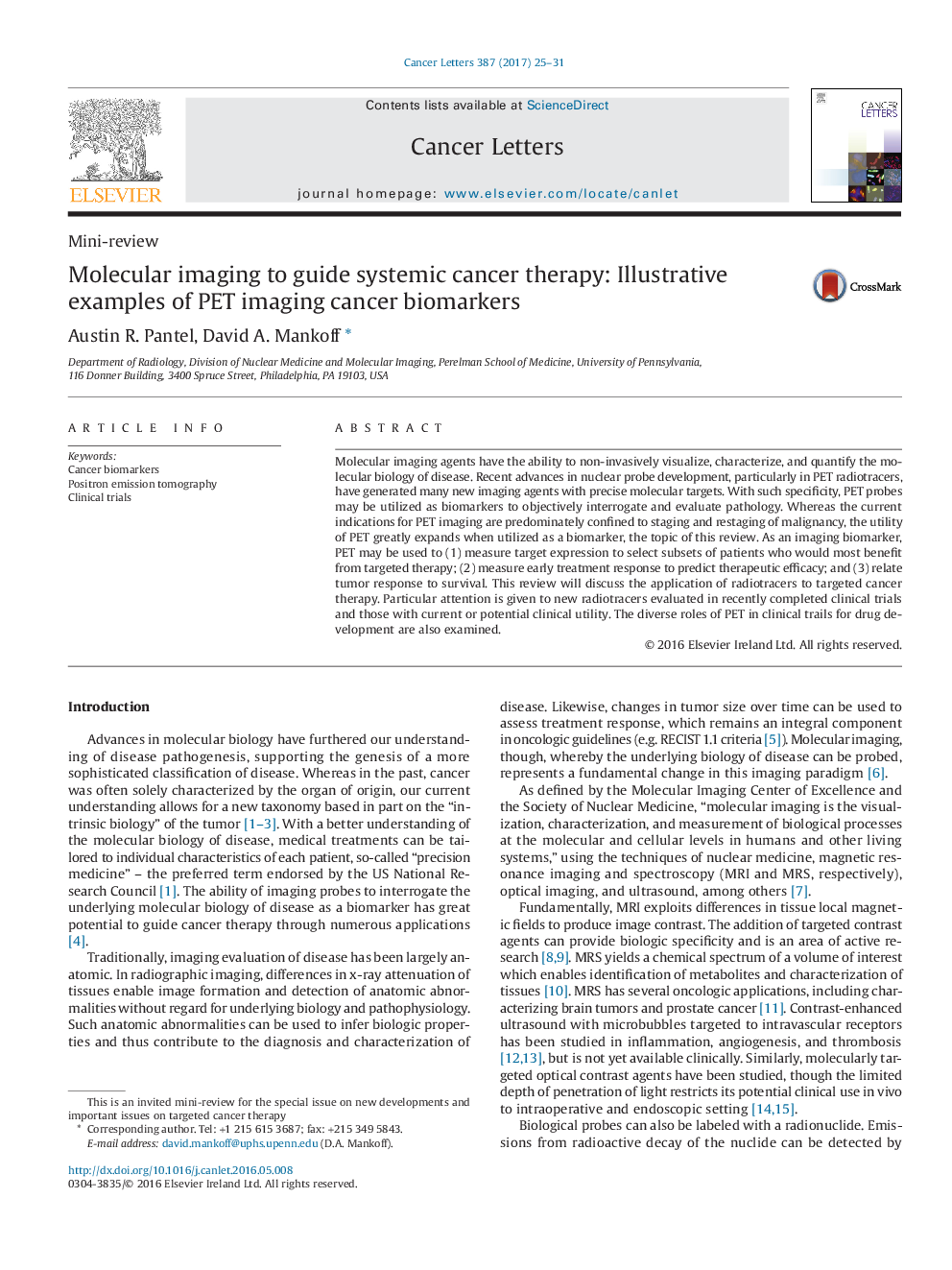| کد مقاله | کد نشریه | سال انتشار | مقاله انگلیسی | نسخه تمام متن |
|---|---|---|---|---|
| 5525436 | 1546682 | 2017 | 7 صفحه PDF | دانلود رایگان |

• Molecular imaging agents can non-invasively visualize, characterize, and quantify disease.
• New radiotracers have expanded the indications for PET imaging in oncologic care.
• PET can measure target expression to select patients for targeted therapy.
• Early imaging with select PET radiotracers can predict early therapeutic response.
• PET may be used to relate tumor response to survival.
Molecular imaging agents have the ability to non-invasively visualize, characterize, and quantify the molecular biology of disease. Recent advances in nuclear probe development, particularly in PET radiotracers, have generated many new imaging agents with precise molecular targets. With such specificity, PET probes may be utilized as biomarkers to objectively interrogate and evaluate pathology. Whereas the current indications for PET imaging are predominately confined to staging and restaging of malignancy, the utility of PET greatly expands when utilized as a biomarker, the topic of this review. As an imaging biomarker, PET may be used to (1) measure target expression to select subsets of patients who would most benefit from targeted therapy; (2) measure early treatment response to predict therapeutic efficacy; and (3) relate tumor response to survival. This review will discuss the application of radiotracers to targeted cancer therapy. Particular attention is given to new radiotracers evaluated in recently completed clinical trials and those with current or potential clinical utility. The diverse roles of PET in clinical trails for drug development are also examined.
Journal: Cancer Letters - Volume 387, 28 February 2017, Pages 25–31